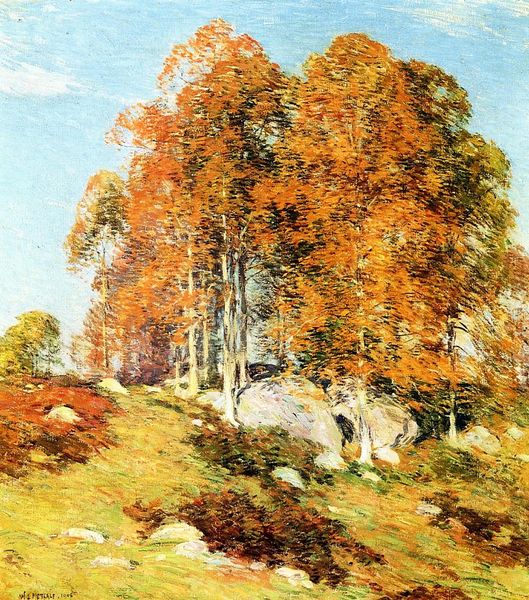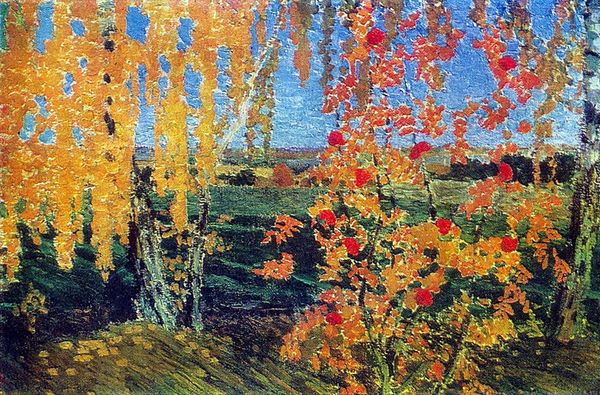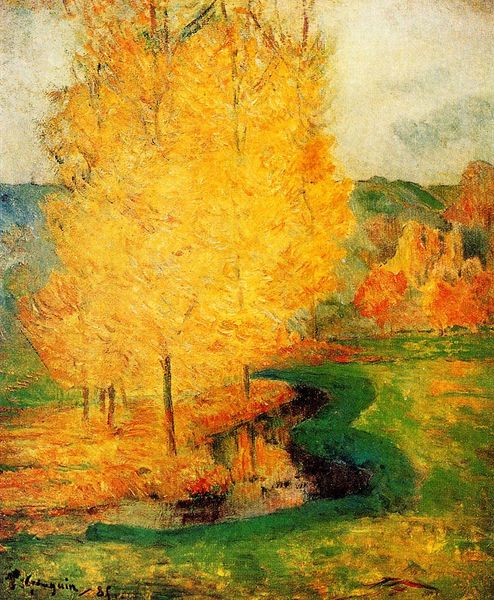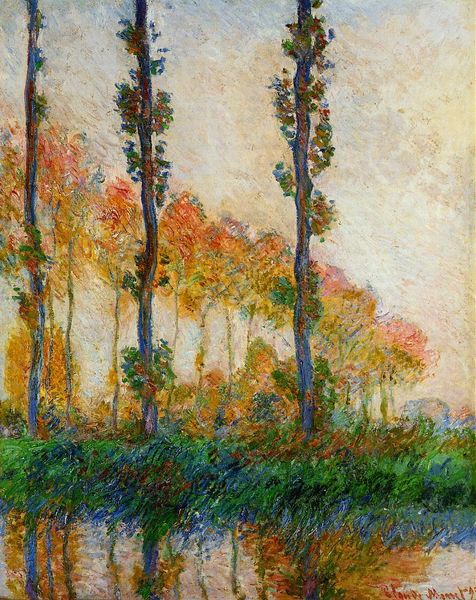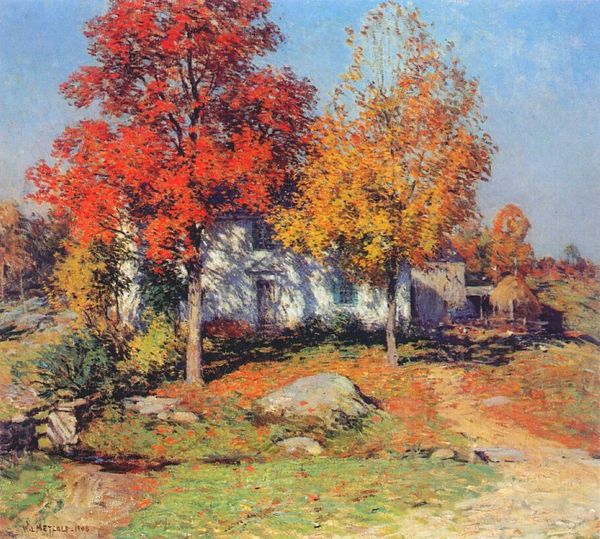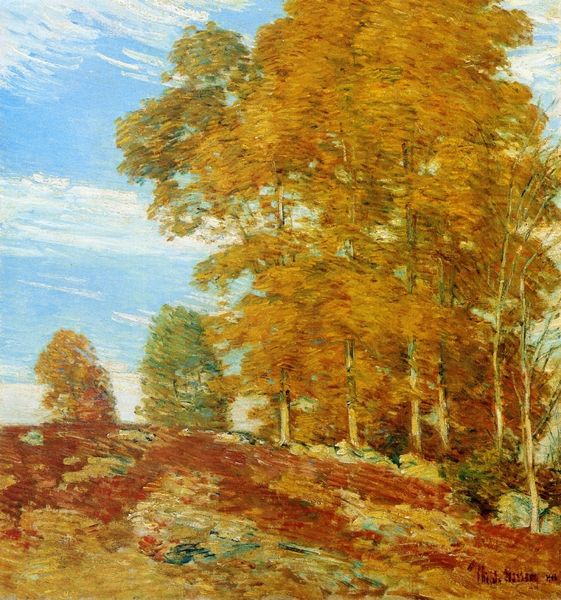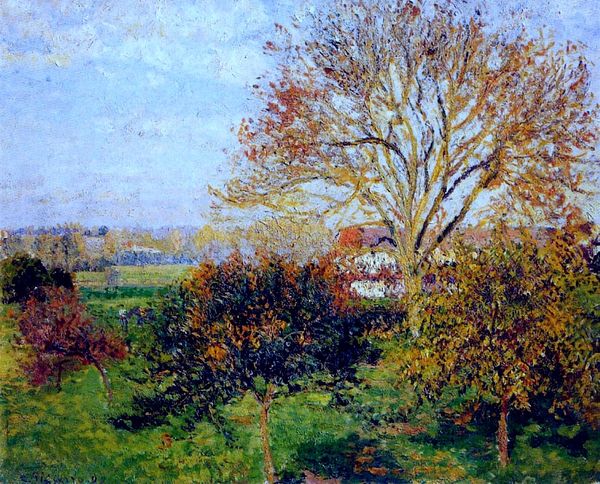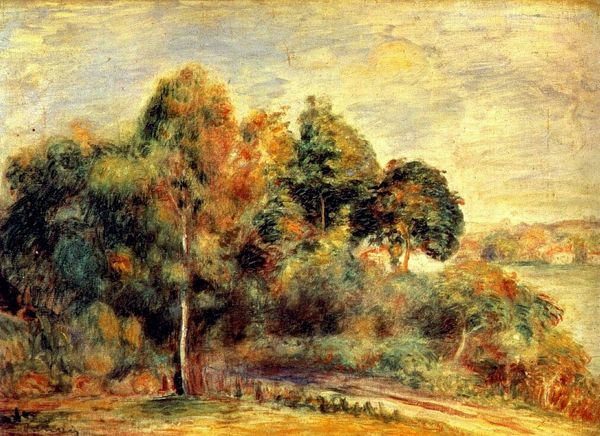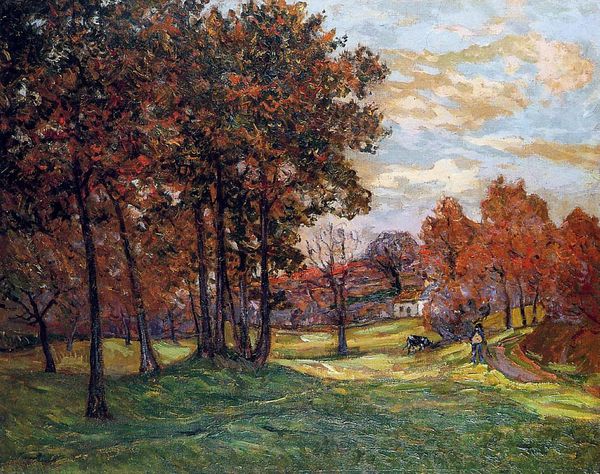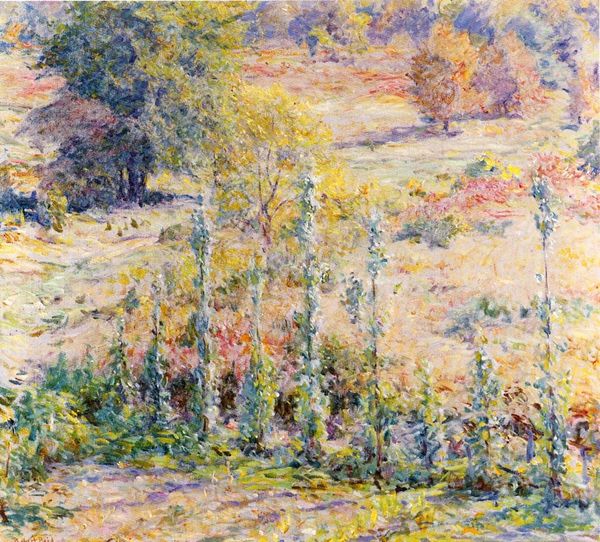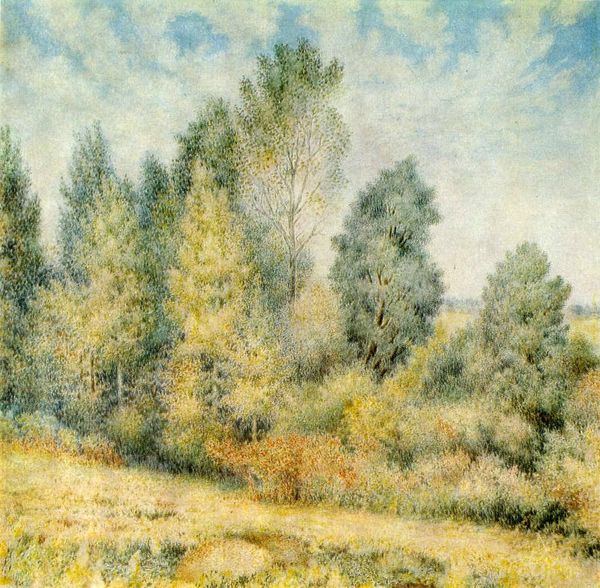
Dimensions: 60.96 x 61.6 cm
Copyright: Public domain
Editor: So, this is Willard Metcalf's "Nut Gathering," painted in 1922. It’s an oil painting, and I am struck by how… nostalgic it feels? The hazy light, the vibrant yet muted colors – it feels like a memory. What stands out to you when you look at it? Curator: Immediately, I see a layered commentary on land use and labor in the early 20th century. Think about it: a seemingly idyllic, Impressionistic scene. But Metcalf, painting during a time of increasing industrialization, subtly gestures towards earlier modes of production, the harvest. The figures, almost invisible, become part of this system. What does “nut gathering” signify beyond a simple pastoral activity? Editor: So you see it as a comment on the changing role of rural life? I was more focused on the aesthetic qualities, the way he captured the light. Curator: Exactly. The style itself—Impressionism—can be seen as part of this dialogue. Capturing a fleeting moment, a sensory experience, it pushes back against the stark realities of industrial progress. It also romanticizes labor. Consider, who has the privilege to pause and paint such a scene? Who is engaged in the actual, perhaps grueling, work of gathering? Editor: That’s a perspective I hadn’t considered. It's unsettling to realize this seemingly beautiful painting is intertwined with labor issues and perhaps even class divisions. Curator: And don’t forget the gendered aspect. Are these figures primarily women and children? The "domestic" sphere gathering resources while the "public" sphere focuses on industry and power. The painting subtly reinforces these power structures, doesn't it? Editor: Wow. It’s amazing how much context you can find within the brushstrokes. It’s really made me rethink how I approach art. I appreciate you pointing that out. Curator: Art reflects its time. And questioning those reflections allows us to challenge contemporary assumptions and power structures. That's why studying art history is so vital!
Comments
No comments
Be the first to comment and join the conversation on the ultimate creative platform.
